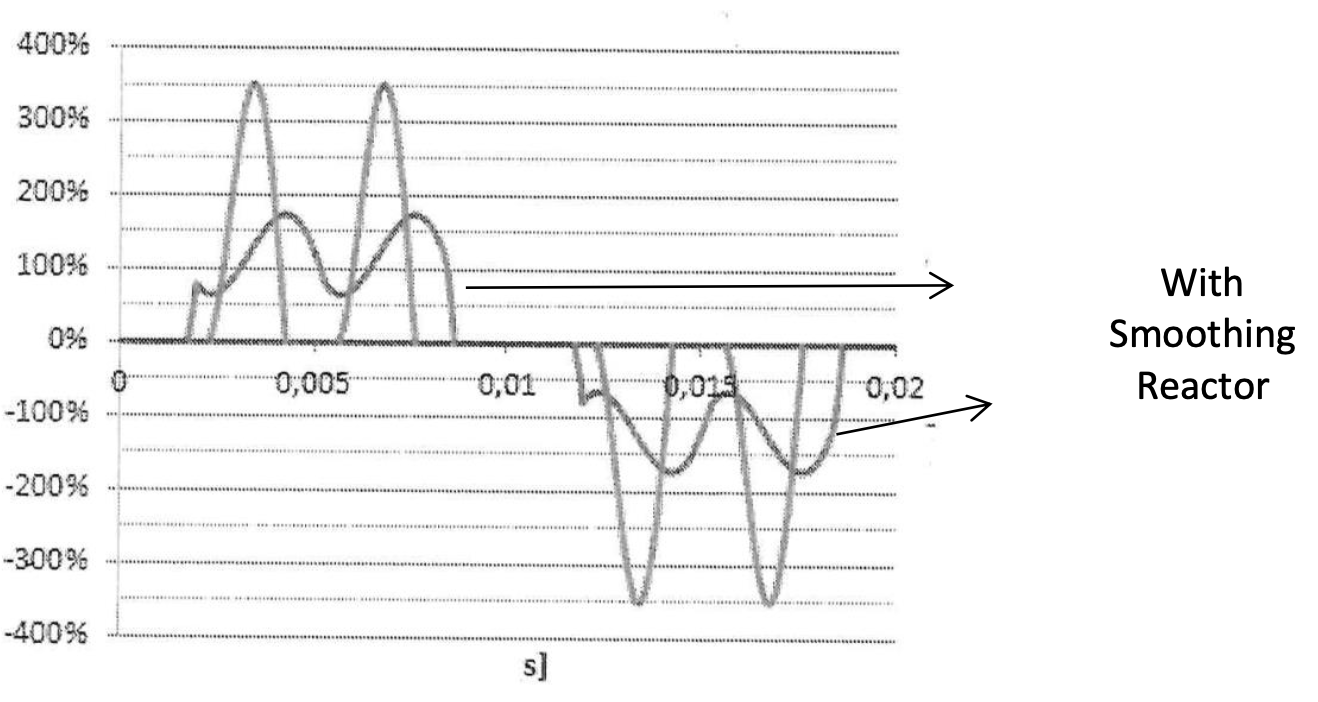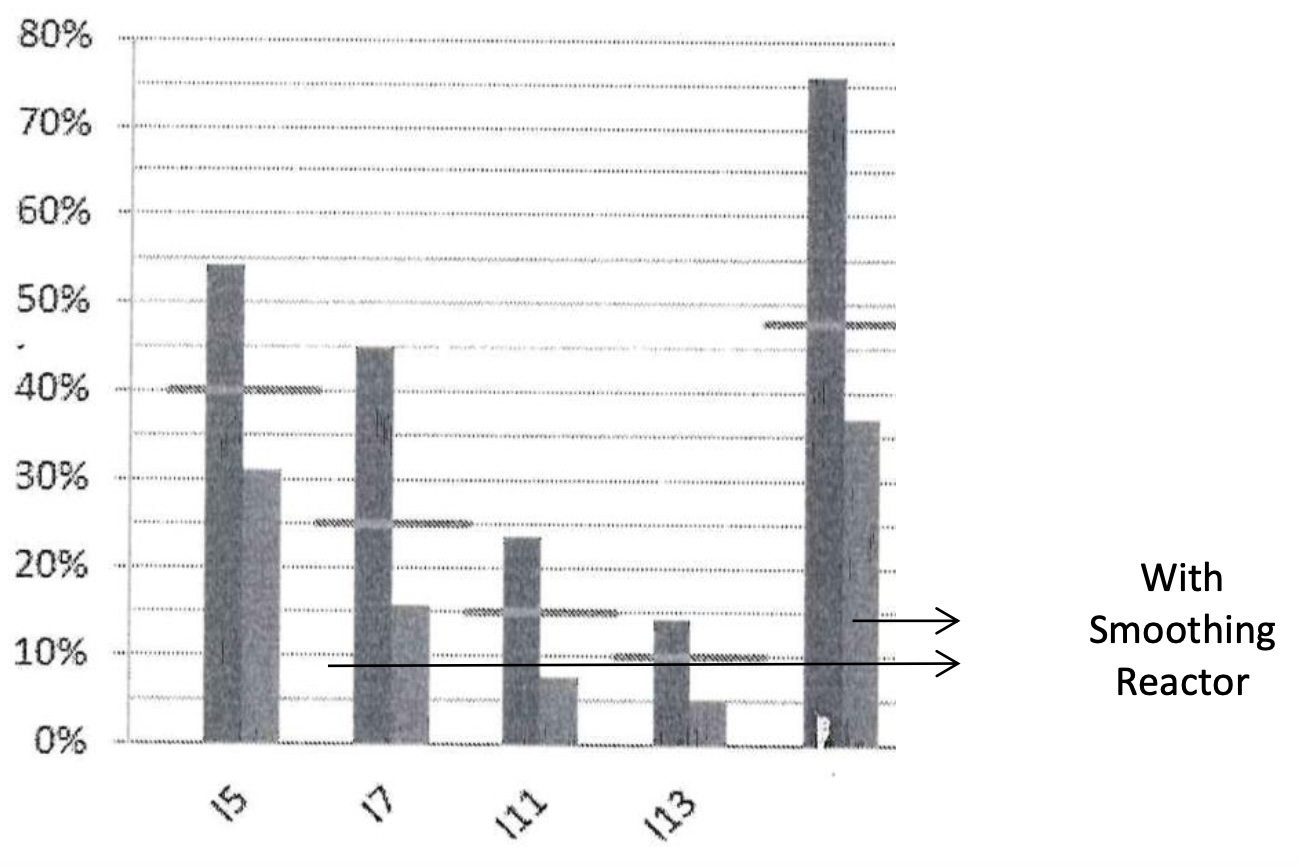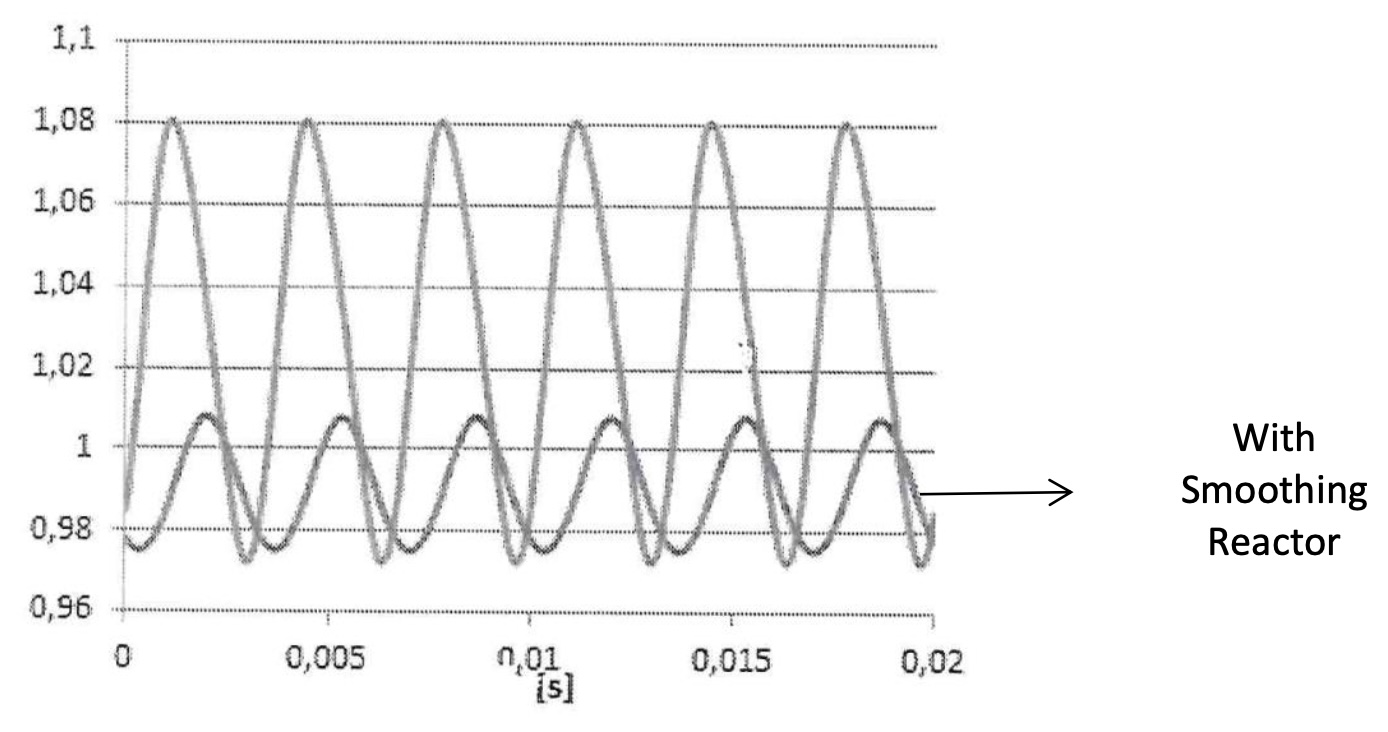SMOOTHING REACTORS
The most common application of driving asynchronous motors in industry is with variable frequency drives. PWM inverters are widely used for speed control due to their high energy efficiency, motion accuracy, high starting torque, and low starting current. However, the 6-pulse diode rectifier circuit at the input stage of the variable frequency drive can be considered a harmonic current source that produces and injects harmonics such as 5th, 7th, 11th, and 13th ( according to the formula h = np±1 ).

The DC busbar of the variable frequency drive has a capacitor that charges and discharges based on the diode switching.
As a result, the load current flowing into the grid, as shown in the graph below, can reach 350% of the nominal current peak value. The depth ratio seen in the figure varies relative to the grid short-circuit power.

When a smoothing reactor is installed on the DC bus of the variable frequency drive, it slows down the rise rate of the current and extends the transmission phase. This almost squares the waveform, leading to a decrease in the maximum peak value to around 180% of the nominal current value. With this connection, the load current of the variable frequency drive becomes smooth as depicted below.

Connecting a smoothing reactor not only smooths the peak value of the load current, but also reduces input harmonic currents.

Installing a DC smoothing reactor on the DC bus reduces the total current harmonic distortion at the input of the variable frequency drive from 77% to 37%, as observed in the harmonic spectrum.

The graph below displays the DC bus voltage of the variable frequency drive with and without the smoothing reactor.

The target DC bus voltage is Udc = 1,35 Uhat . Without a smoothing reactor connected to the DC bus, the measured voltage on the DC bus fluctuates within ±5% range and reads 546V. Upon installation of the smoothing reactor, there is a decrease in DC bus voltage to 534V, with fluctuations now staying within ±1.5% range, leading to a notable reduction in semiconductor losses.

In summary, the smoothing reactor offers the following benefits:
- It reduces harmonic currents introduced to the grid by the variable frequency drive.
- It limits the peak value of the load current from the variable frequency drive.
- It smoothens DC link voltage (reducing AC voltage peaks).
- It prevents unwanted overvoltage trips.
Smoothing reactors offer significant benefits that far outweigh their costs. We recommend using them as accessories with every variable frequency drive, as there are terminals on the drives specifically designed for connecting smoothing reactors.
Ideal Type of Connection:

Didem Ergun Sezer
Ergun Elektrik A.Ş.
didem@ergunelektrik.com

